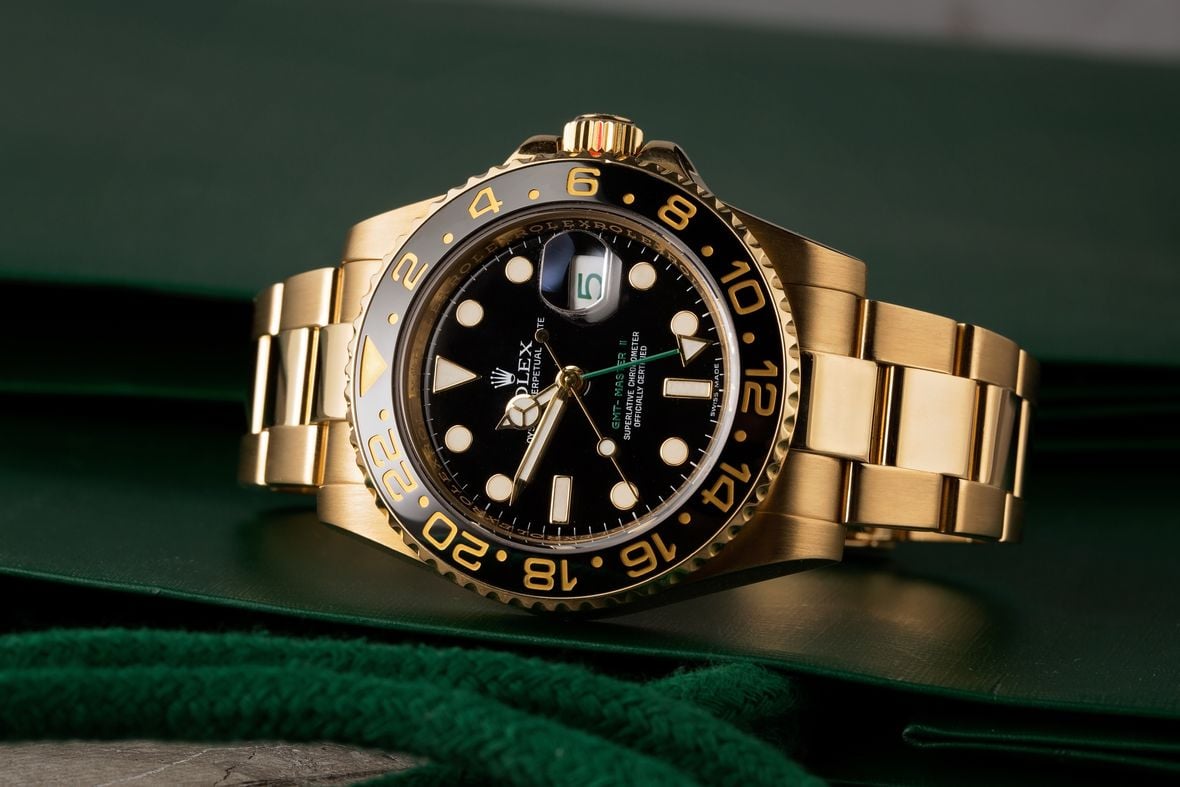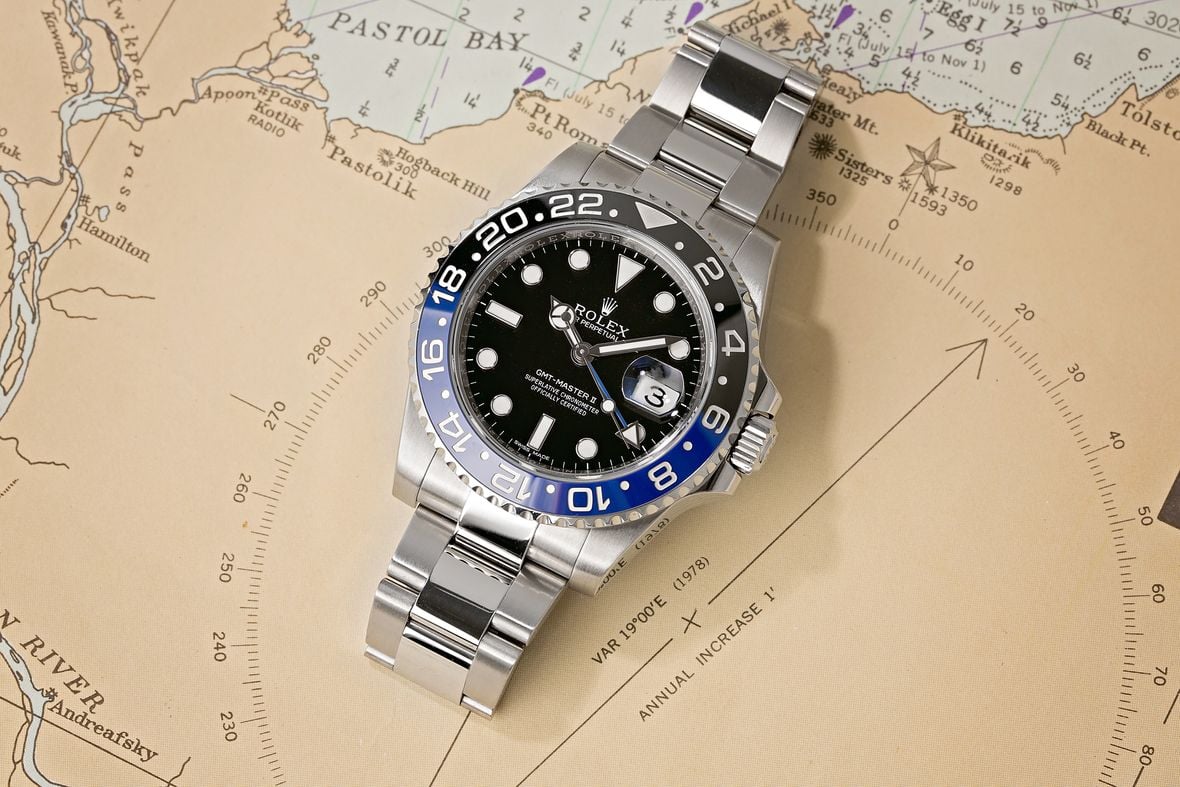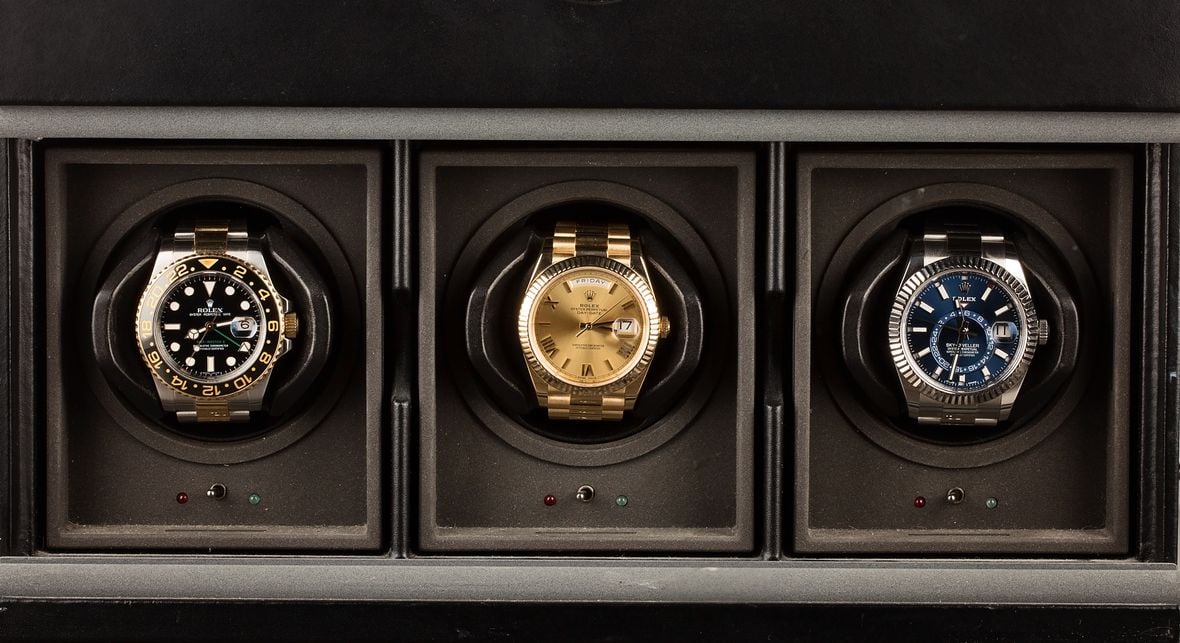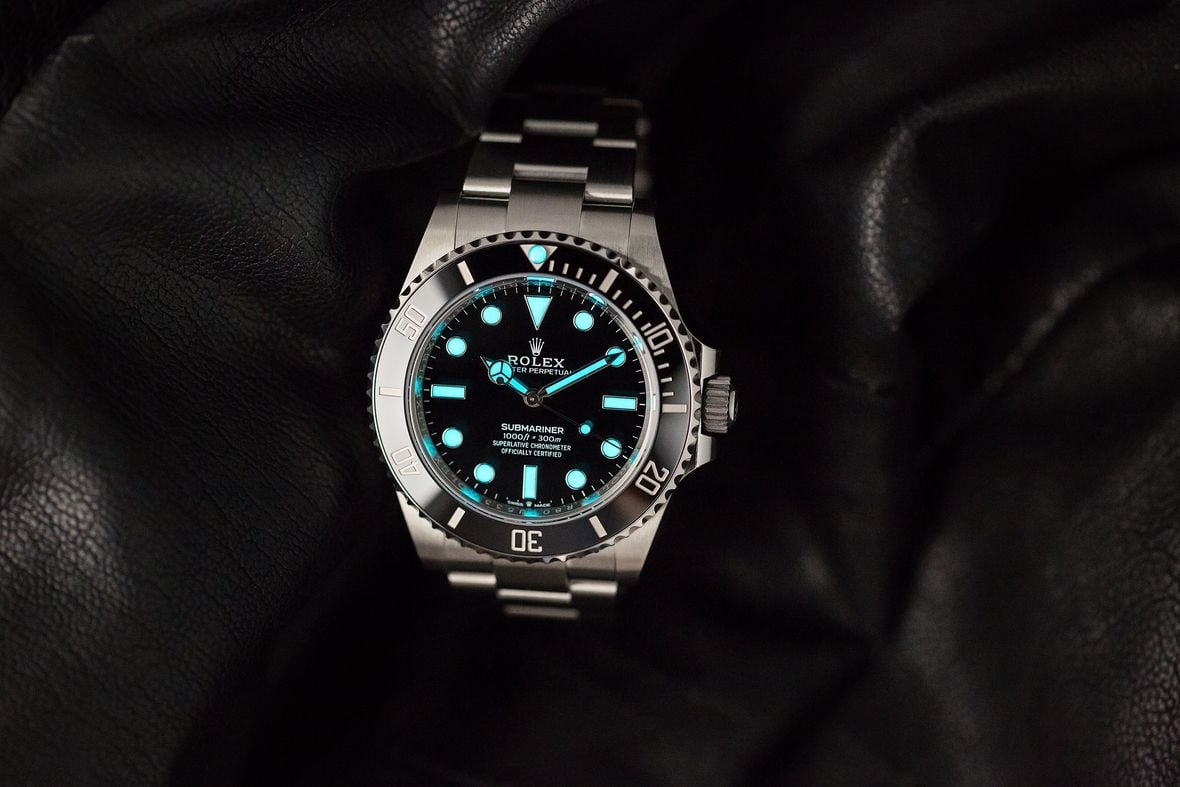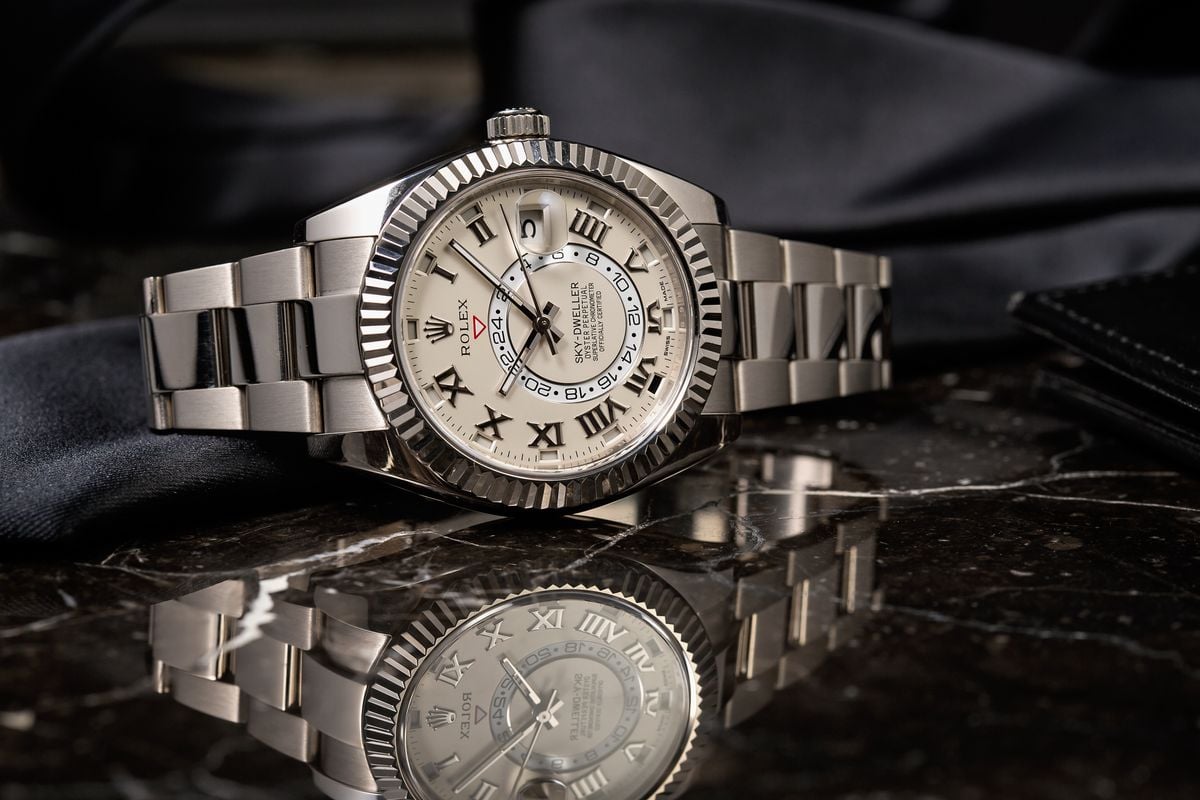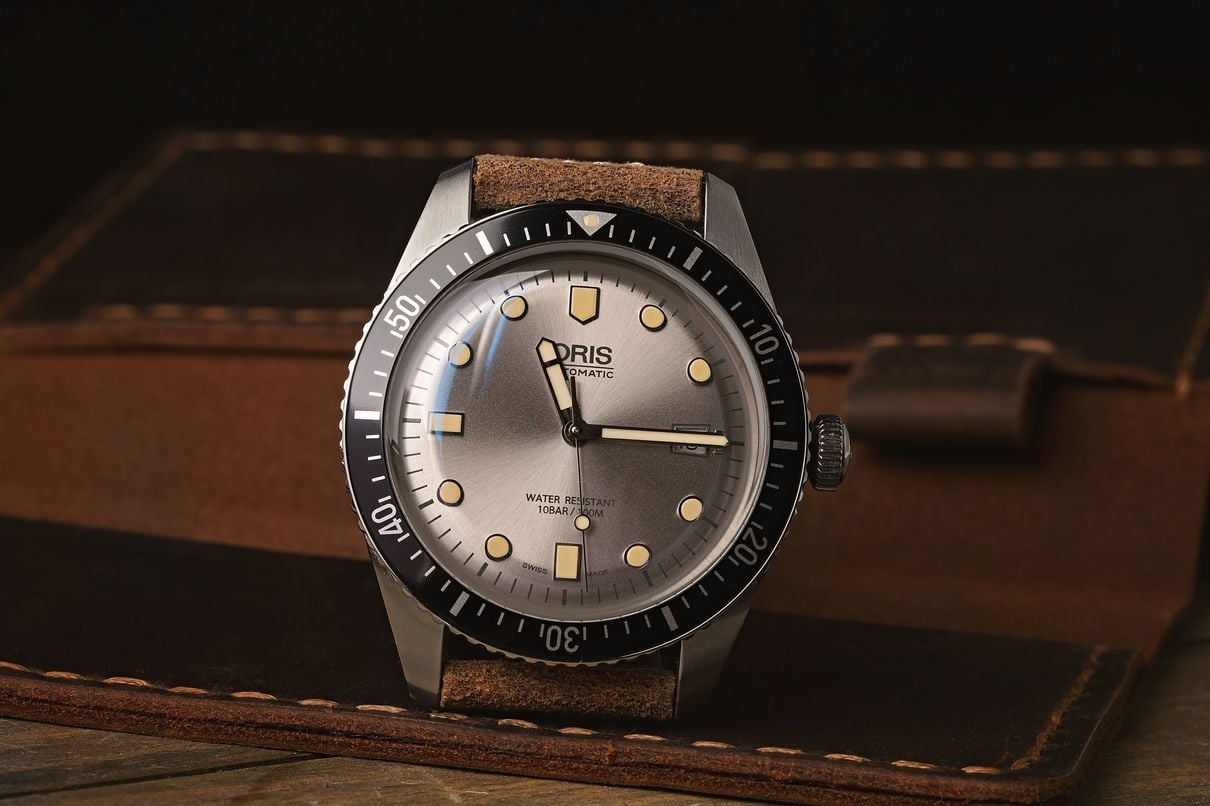Have you ever read the three-letter code “GMT” in the name of the Rolex GMT-Master and wondered what it actually stood for? Further than that, has it crossed your mind what it actually means when it comes to the form and function of a watch? Well, wonder no longer, because in this guide we will be explaining not only what those three letters stand for but exactly what a Greenwich Mean Time complication means for your choice of wristwatch.
Click here for our Ultimate Buying Guide on the Rolex GMT-Master.
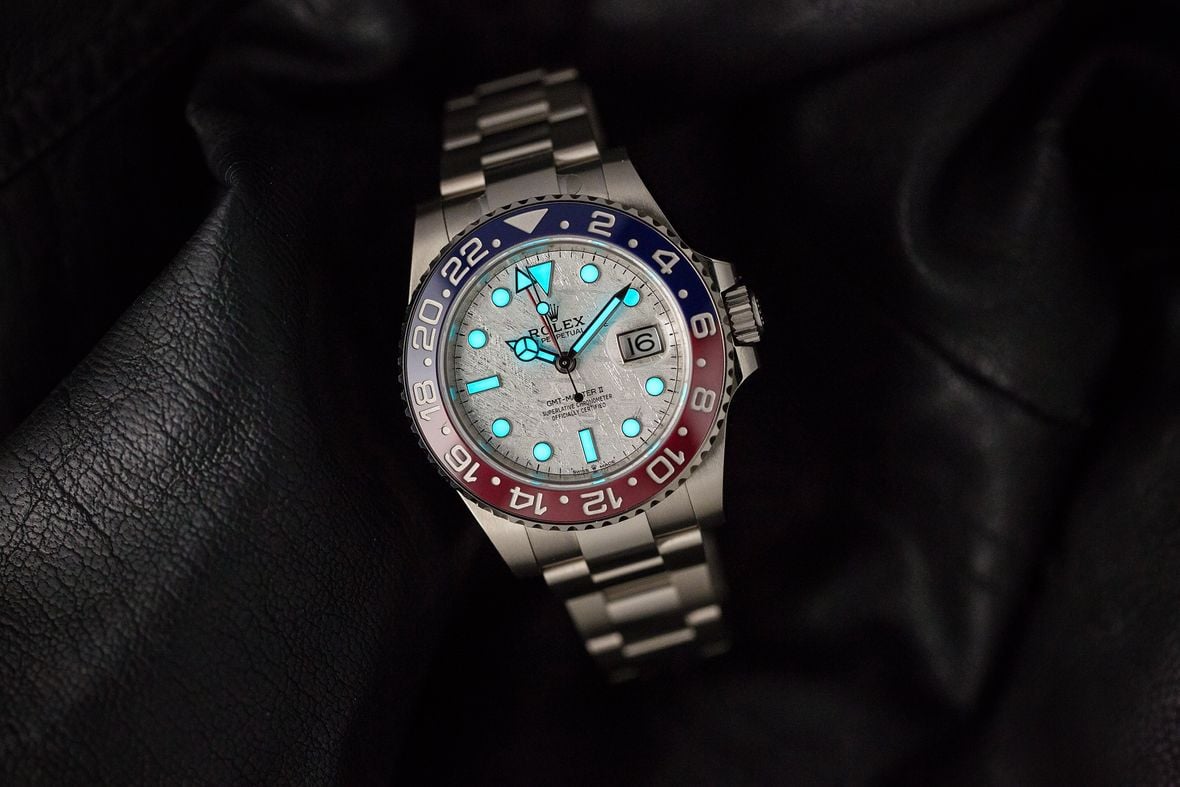
What does GMT mean?
That’s right: GMT literally stands for Greenwich Mean Time. Greenwich is a place in England. Situated in South East London, Greenwich has a rich and esteemed maritime history. As such, it was chosen as the “prime meridian” at the International Meridian Conference, Washington D.C., held in 1884 – 33 years after Sir George Airy had established the meridian in 1851.
Forty-one delegates from 25 countries met to agree upon an official meridian, which would simplify global navigation systems. Greenwich was already in popular usage (with around two-thirds of all vessels regarding Greenwich as 0° Longitude), so it was the obvious choice. Despite this, the French delegation abstained, preferring to use the Paris Meridian for several decades thereafter. The Paris Meridian eventually fell into disuse in 1914 and it is now regarded as longitude 2°20’14.03″ East in regards to its position relative to Greenwich.
The Greenwich meridian is an important institution in both timekeeping and navigation. Timezones around the world are expressed regarding how far ahead of or behind Greenwich Mean Time they are. For example, Paris is (usually) one hour ahead of England, and therefore GMT+1 (or UTC+1, which stands for Universal Time Coordinated – a somewhat more diplomatic alternative to UTC). While such usage is common and widely interpretable, not so many people know what those letters stand for and how important they actually are.
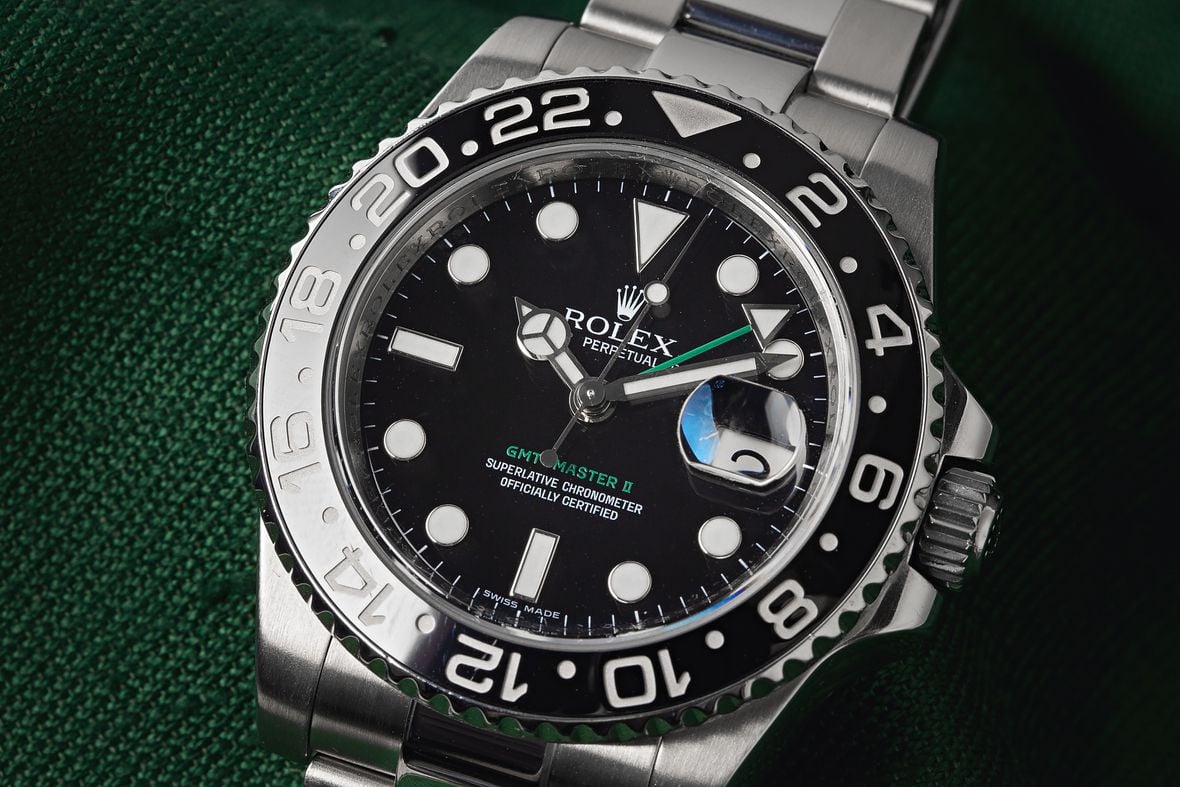
What does this have to do with my Rolex GMT-Master?
In the 1950s, commercial air travel was really taking off. More and more pilots and cabin crews were finding themselves spending significant time in timezones away from home. As such, the need to track a second (or perhaps even third) timezone became very important to these pioneering aviators.
In 1955, with design input from Pan-Am crew members, Rolex released its first GMT watch, following hot on the heels of the Glycine Airman, which performed the same functions but had hit the market two years earlier in 1953.
The Rolex GMT-Master, like the Airman before it, used a 24-hour bezel (an outer rotating ring around the face of the watch) to track a second timezone by way of a large, arrow-tipped hand that completed one rotation of the dial every 24 hours.
This hand – known as the GMT hand – moved at half the regular hour hand’s speed, which was mounted on the central axis above it. Although they show two timezones, GMT watches should not be confused with dual time watches, which use one main display to show the home time and a second sub-register or secondary 12-hour hand to display the second timezone. GMT watches show two (or three) timezones using nothing more than a single dial, a regular handset (hours, minutes, and seconds), a 24-hour (or GMT) hand, and a rotating bezel.
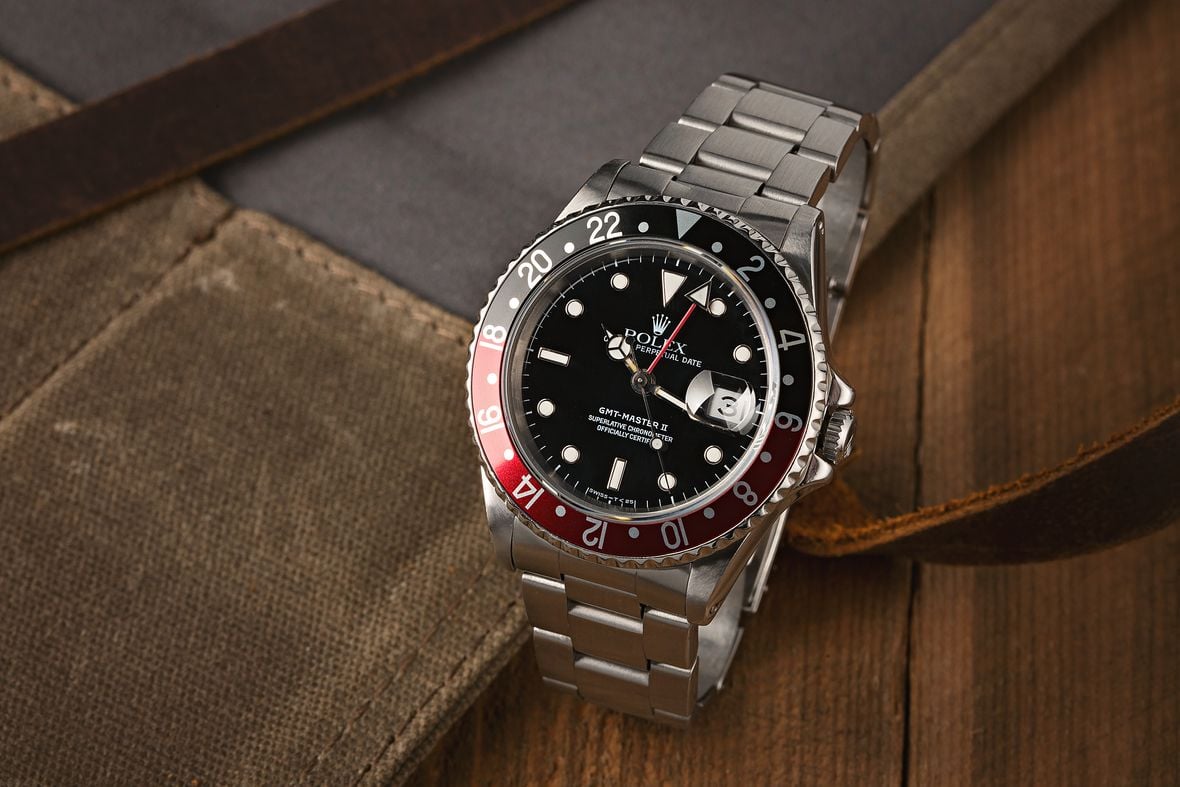
One timezone, two, or three?
We mentioned earlier that it is actually possible (however unusual) to use some GMT calibers to show three timezones simultaneously, but this is not true of all models, nor is it particularly simple on all those that possess this functionality. The key here is being able to set the GMT/24-hour hand independently of the standard hour hand. In the very first Rolex GMT-Master watches, this was not possible. It was only with the introduction of the now-famous GMT-Master II watches in the early ’80s that this became an option.
Let’s start with the basics: a regular watch tells the time in one location. You have a 12-hour dial and at least a minute hand with an hour hand that makes two full revolutions of the dial every 24 hours. When you add a GMT/24-hour hand to the mix and a rotatable 24-hour scale in addition to the standard 12-hour scale on the dial, two times are indicated. If these hands are linked (as they were in the GMT-Master), the times displayed are the same, although one of those times will indicate the time in a 24-hour format, displaying whether or not it is am or pm.
By making the 24-hour scale moveable by printing/engraving it on a rotatable external bezel, it is possible to shift the time indicated by the GMT/24-hour hand forward or backward. In this manner, two different times can be displayed simultaneously.
With the introduction of an independent hour hand, two new options present themselves. The first is to move the hour hand when arriving in a new timezone while leaving the GMT hand and the bezel untouched. That way, the GMT hand will show your home time when read out against the unmoved 24-hour bezel, while the regular hour hand will show the local time on the main dial. In these situations, of course, the minute hand is left untouched.
The second option allows you to display three timezones at once by moving both the GMT/24-hour hand and then adjusting the bezel as well. This can be a little complicated to read, especially if there is no static 24-hour scale printed around the edge of the dial itself. When you rotate the 24-hour bezel on a watch without a static 24-hour scale, your only point of reference for the 24-hour hand also changes, so reading 3 timezones at once on one of these watches can require a bit more mental effort.

How it works on the Rolex GMT-Master
In this scenario, your local time would be represented by the regular hour hand. You can ignore the GMT/24-hour hand and the bezel, and simply read the time as you normally would as if they were completely absent.
The second timezone is expressed by your GMT/24-hour hand and its relative position on the 12-hour dial (or the 24-hour bezel if you are only referencing 2 timezones). As a working example, let’s say it is 1 pm in your local timezone and 3 pm in your second timezone. Your regular hour hand will be pointing at the 1 o’clock marker on the dial. Meanwhile, your second in between the 7 and 8 o’clock markers indicating 15:00 (the 7 o’clock marker on a 12-hour dial is the equivalent of 14 o’clock on a 24-hour dial; the 8 o’clock marker equates to 16 o’clock; therefore, 3 pm, or 15 o’clock, sits squarely between the two).
If your 12-hour dial has a 24-hour scale printed around its edge, working this out is far easier, as the GMT hand will point directly to its corresponding value on it. However, for watches like the Rolex GMT-Master II that lack this stationary 24-hour scale, it takes a quick calculation but is perfectly workable.
The next step to mastering the triple-timezone-method is slightly more complicated. However, you must then adjust the rotating bezel to show the third zone against the second (not the first – remember, the 24-hour bezel only works with the 24-hour hand). Let’s assume, therefore, that it is midnight in your third preferred timezone. You would then rotate the 24-hour bezel so that the 12 o’clock triangle aligned with the GMT-24-hour hand (which, in this example, is currently sitting at 15 o’clock/in between 7 and 8 o’clock).
Consequently, the bezel number now sitting in the traditional 12 o’clock position is 9 am (or likely a dot/space between 8 and 10). This indicates a time difference of 9 hours between your second and third timezones (which, when you add 9 to 15 to get 24, you will find to be correct).
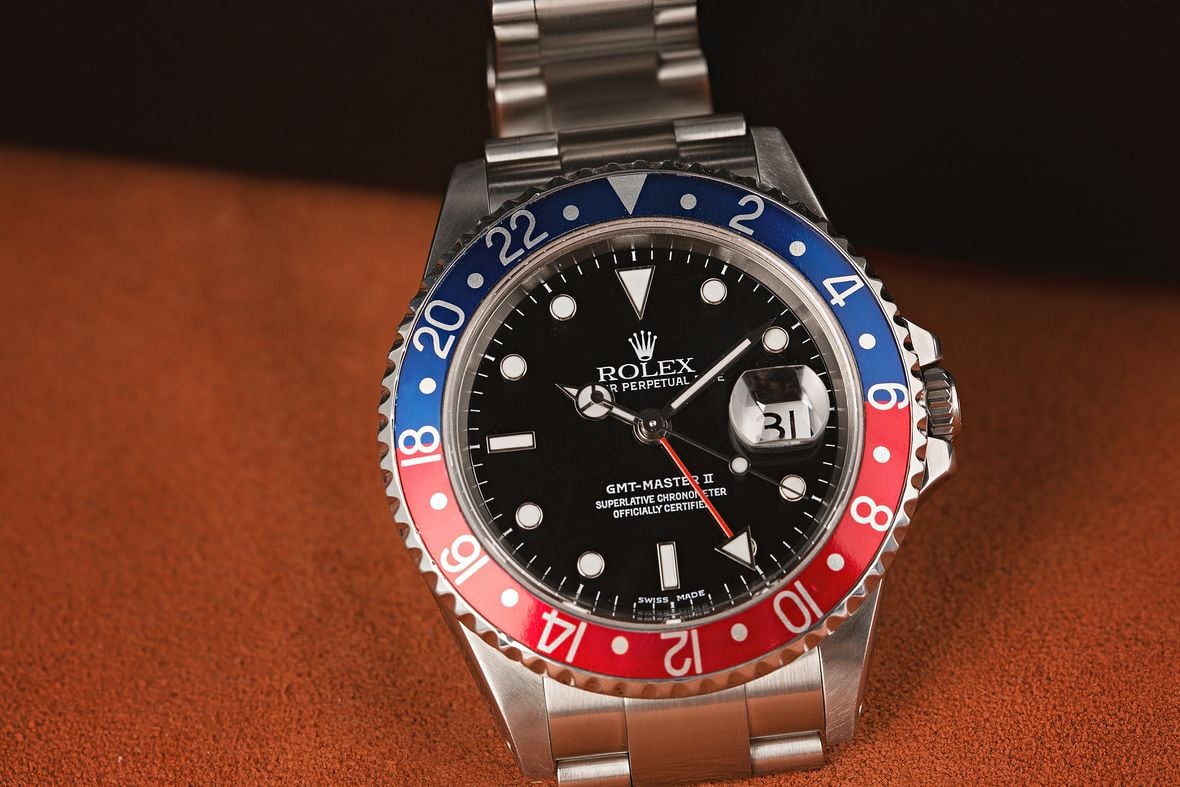
The Rolex GMT-Master and Rolex GMT-Master II
Rolex GMT-Master and GMT-Master II models are some of the most sought-after pieces in the watch world these days. They have been worn by icons throughout history and paved the way for countless other GMT watch styles to enjoy their day in the sun. Regardless, no other GMT model has come close to Rolex’s GMT watch.
The most famous bezel configuration is known as the “Pepsi”. This bezel is split horizontally between red and blue segments. The blue shows the nighttime hours, while the red shows the daylight hours (roughly). This split-bezel set-up is common within the range and is available in a handful of different colors, but the most famous ones within the Rolex catalog are the Pepsi, the “Coke” (black and red), the “Root Beer” (black and brown), and the “Batman” (black and blue).
All Rolex GMT watches offer a similar overall aesthetic, regardless of their specific color profile, but the main difference between the GMT-Master and the GMT-Master II is that fact that the original GMT-Master can display a total of two timezones, while the independently adjustable hour hands on the GMT-Master II enable it to display a third. Additionally, the jumping feature of the 12-hour hand makes it incredibly convenient to change timezones while traveling, since you can adjust it forward or backward in one-hour increments without disrupting the precision of your watch.
As far as which Rolex GMT watch is right for you, that is only something you can decide for yourself and it will largely depend on your lifestyle and wearing habits. However, both are absolute icons of the watch world, and both models offer Rolex’s legendary build quality and are designed to last a lifetime.
